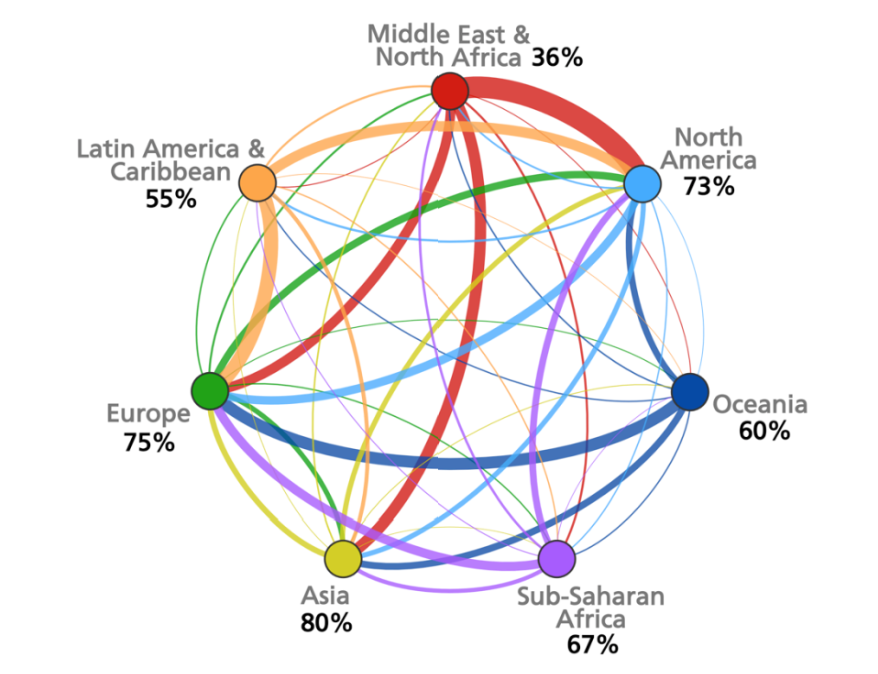The previous post demonstrated not only that Sub-Saharan Africa and the Middle East and North Africa are net-importers of content on Wikipedia (Sub-Saharan Africa, for instance, receives 10.7 more edits from the rest of the world than it commits to the rest of the world), but it also showed where those edits come from.
This post does something a little different: it shows where edits are sent to.
In this network, an edge (a line connecting nodes) thickness is proportionate to the total number of edits received. That is, if a region sends most of its edits to North America (even if it sends very few edits) then that edge will be thick.
With the graph normalized by the number of edits sent, we see a striking finding from the Middle East and North Africa (MENA) region. Not only do less than half of edits in the MENA region stay within the MENA region, but a substantial share go to North America, even if their impact on the overall number of edits within North America is rather minimal.
In fact, proportionate to the total number of edits sent from a region, MENA sends more edits to North America than any other region sends to another. This leads to what might be considered a ‘double whammy’ for the MENA region. Not only are there not many articles about the Middle East, and even fewer in local languages. And not only are there very very few editors. But of the edits that exist, a lot of them are to write about Europe, Asia, and America.
The global informational cores are exerting a sort of information magnetism. The presence of information creating a virtuous cycle of informational richness; and the absence of information being part of a vicious cycle of informational poverty.
Ralph Straumann and I are working on a paper that explores these topics and this conclusion in more detail, and will post a full draft here as soon as we have one. In the meantime, we’d welcome any comments or questions on the patterns and data presented here.
Note that this work comes from the following report:
Graham, M., and Hogan, B. 2014. Uneven Openness: Barriers to MENA Representation on Wikipedia. Oxford Internet Institute Report, Oxford UK.
The following paper also offers an abridged version of some of the results:
Graham, M., Hogan, B., Straumann, R. K., and Medhat, A. 2014 Uneven Geographies of User-Generated Information: Patterns of Increasing Informational Poverty Annals of the Association of American Geographers (forthcoming).
Or for a broader discussion about why the locality of participation matters, see:
Graham, M. 2014. Internet Geographies: Data Shadows and Digital Divisions of Labour. In Society and the Internet: How Networks of Information and Communication are Changing our Lives, eds M. Graham and W. H. Dutton. Oxford: Oxford University Press. 99-116.
Graham, M., M. Zook, and A. Boulton. 2013. Augmented Reality in the Urban Environment. Transactions of the Institute of British Geographers. 38(3) 464-479.
